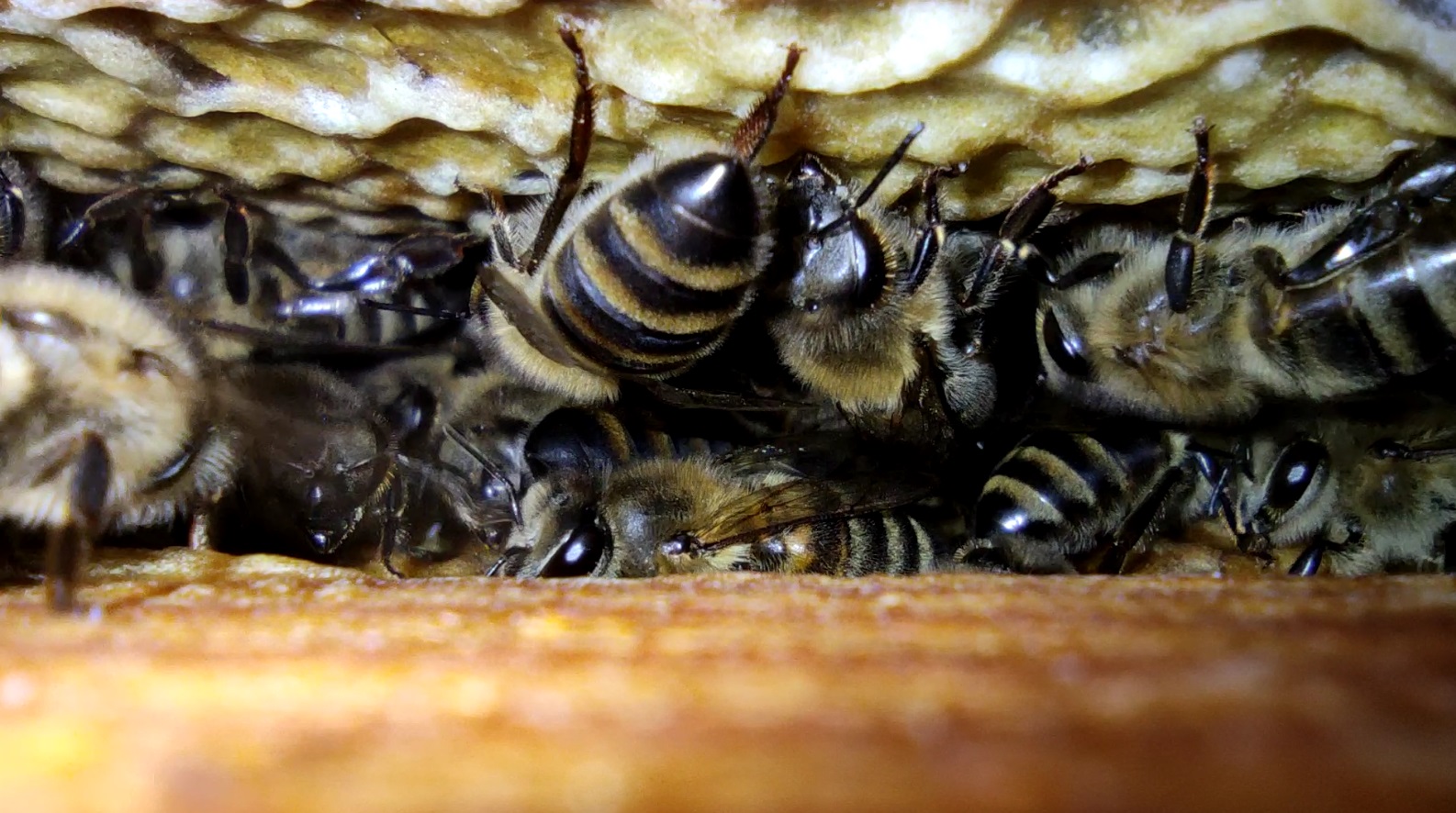Bees are extraordinary creatures, not only for their ability to produce honey and pollinate crops but also for their remarkable strategies to survive extreme conditions. When temperatures drop and cold days set in, bees adapt their behavior to ensure the survival of the hive. Here’s a closer look at what bees are doing during very cold days:
Winter Survival: The Hive as a Warm Shelter
During cold days, bees retreat into their hive to create a warm, safe environment. Unlike mammals, bees do not hibernate. Instead, they remain active inside the hive, even though their activity levels are greatly reduced. The hive acts as a natural insulation chamber, keeping the colony protected from harsh weather.
Forming the Winter Cluster
To combat freezing temperatures, honeybees form what is known as a “winter cluster.” In this formation, the bees huddle together in a dense ball, with the queen at the center. Worker bees on the outer edges of the cluster vibrate their flight muscles to generate heat, maintaining the hive’s temperature. Bees take turns moving from the colder outer edges to the warmer interior to ensure no one succumbs to the cold.
- Temperature Control: The cluster maintains a core temperature of about 35°C (95°F) around the queen and brood (if present). The outer layer of the cluster may be much cooler, but never freezing.
Conserving Resources
Cold days limit the bees’ foraging opportunities, so they rely on the honey stores collected during the warmer months. Bees consume this stored honey to fuel their energy-intensive task of heat generation. A healthy hive typically has enough honey to last through the winter.
Minimizing Activity
Bees reduce their activity to conserve energy. You won’t see them flying around on cold days because their wing muscles are unable to function properly below 10°C (50°F). Instead, they focus on staying warm and preserving resources.
Guarding the Hive
Even in winter, bees remain vigilant about the hive’s security. They protect their precious honey stores from potential intruders such as mice or other insects seeking shelter or food. Worker bees stationed at the hive entrance are ready to defend the colony if necessary.
Cleaning and Ventilation
Maintaining cleanliness is crucial for the health of the colony, even during winter. Bees work to remove debris and dead bees from the hive when conditions allow. They also maintain ventilation to prevent excess moisture, which can lead to mold and jeopardize the hive.
Challenges Bees Face During Cold Days
- Moisture: Condensation from the bees’ respiration can build up in the hive. Excess moisture, combined with cold temperatures, can be fatal to bees.
- Starvation: If the colony runs out of honey or if they cannot access their stores due to extreme cold, starvation becomes a serious threat.
- Predators: Predators like mice can cause disturbances in the hive, adding stress to the already vulnerable bees.
How Beekeepers Can Help
Beekeepers can play a vital role in supporting their colonies during cold days:
- Provide Enough Food: Ensure the hive has adequate honey stores or supplement with sugar patties or fondant.
- Insulate the Hive: Add insulation to the hive to retain heat while ensuring there is still proper ventilation.
- Reduce Disturbances: Avoid opening the hive unless absolutely necessary, as this can disrupt the cluster and expose bees to the cold.
- Prevent Pests: Use mouse guards and other protective measures to keep predators at bay.
Conclusion
Bees are masters of adaptation, and their winter survival strategies are a testament to their resilience and cooperation. Understanding their behavior during cold days not only deepens our appreciation for these incredible insects but also highlights the importance of supporting them, especially during the harshest seasons. By ensuring their survival in winter, we guarantee their return to our gardens and fields when spring finally arrives.
